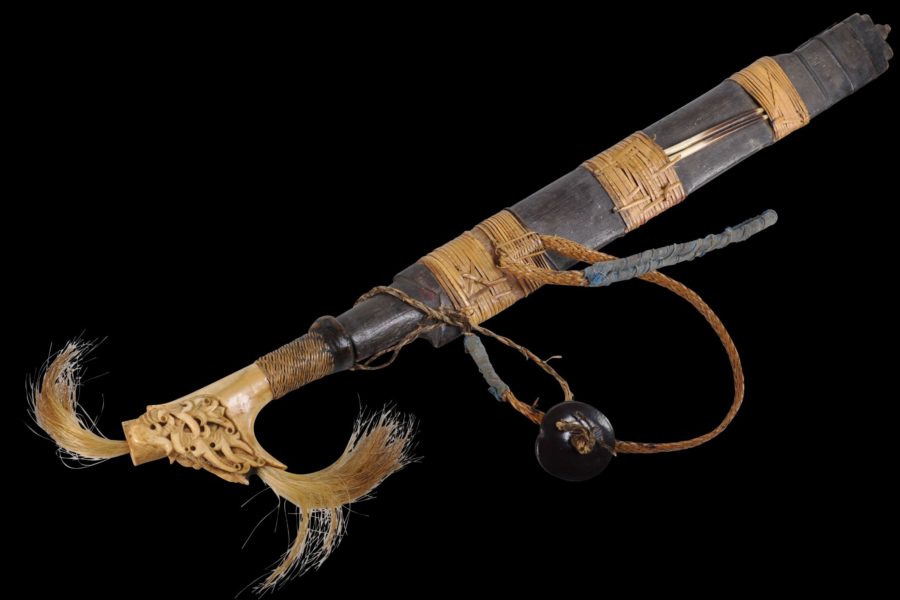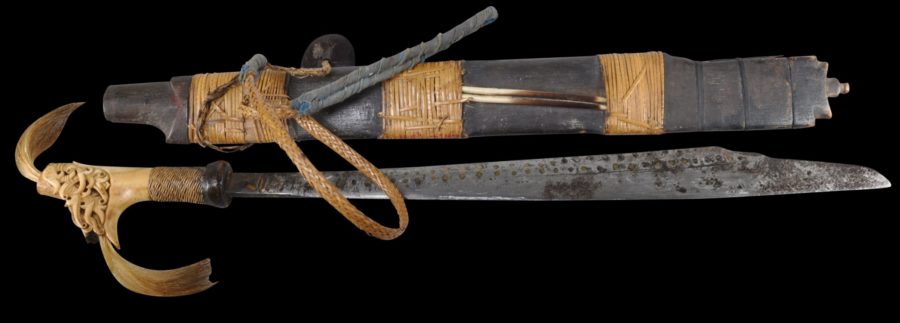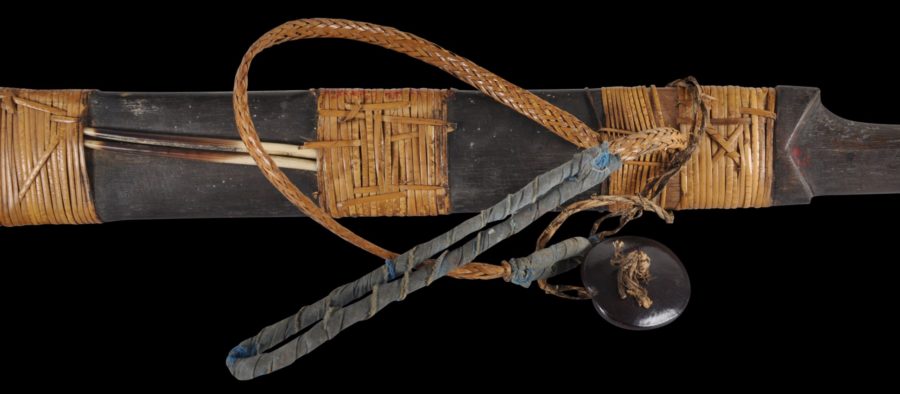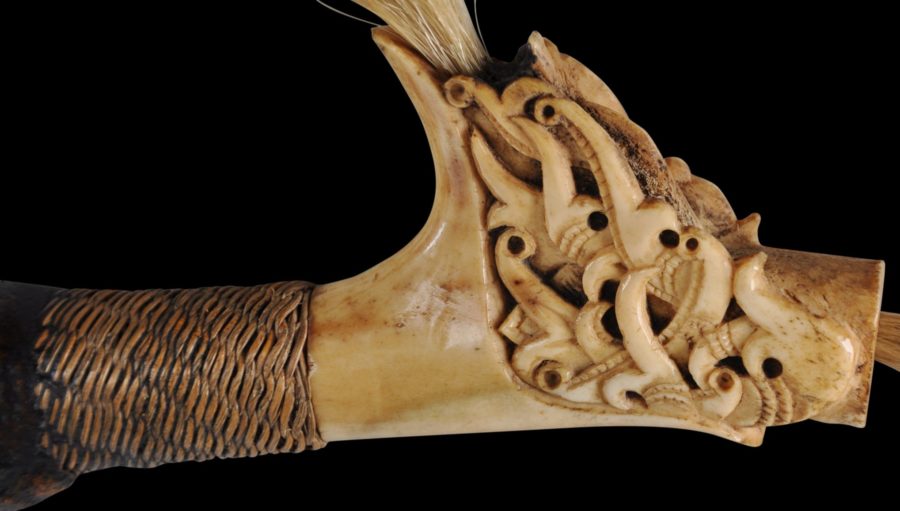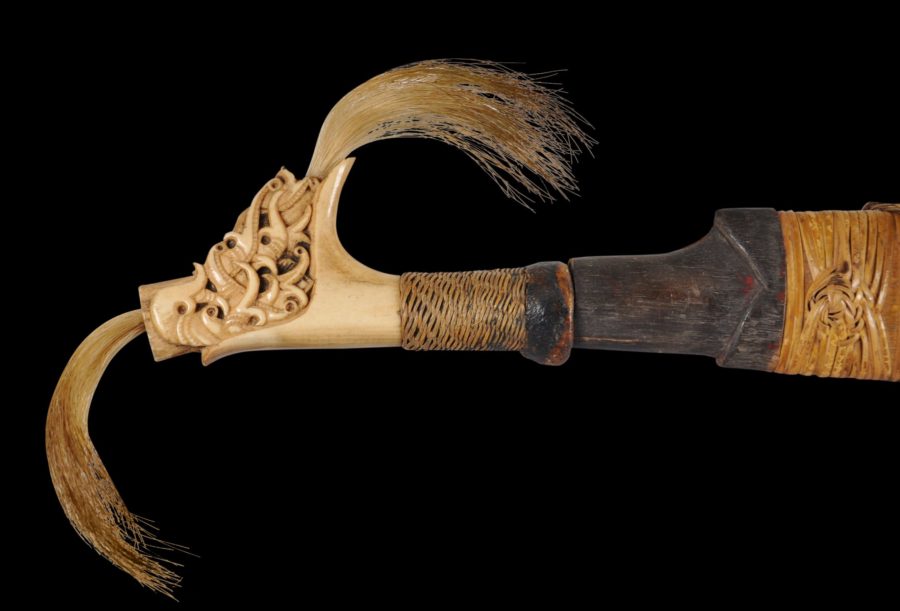This machete-like mandau Dayak sword is notable for its excellent patina, and the decoration of the scabbard which includes much rattan and so on. It is a fine excellent example that almost certainly dates to the nineteenth century.
It is from the Dayak people and from the Iban sub-group, and most likely from Sarawak on the Malaysian part of Borneo island. In the past, the Ibans were known as the Sea Dayaks. The Ibans were renowned for headhunting.
The hilt is made of carved deer horn. According to Heppell (2005, p. 125) the carving is based on scrolls and leech motifs. The leech (lemetek) is associated with blood sucking and so was considered an appropriate motif for a weapon.
Tufts of light-coloured hair issue from the hilt – it is long and probably from a boar.
The wooden scabbard is bound with rattan and has an attached plaited rattan loop (partly wound in cloth padding) to allow the mandau to be hung from the arm. This is decorated with a hard, dark brown nut (buah keluak). The buah keluak (Pangium edule) tree is indigenous to Malaysia, Indonesia and Singapore. The seeds are used in traditional Malay and probably Dayak, cooking after having undergone a process that traditionally involved underground fermentation, soaking and cooking to leach the seeds of their toxicity.
One side of the scabbard also is decorated with two long quills from the Malayan porcupine (hystrix brachyura), which is indigenous to much of Southeast Asia, including Borneo.
The woven or plaited dark brown fibre of the gleichenia linearis fern has been used to lash the hilt to the blade which constitutes the grip, and to make straps to keep the wooden casing of the scabbard together. The plaiting is fine and has a very dark patina – the age is particularly evident.
The blade is of hardened iron. It has a slight curve and is single edged. It is relatively plain although has decorative notches along its length.
Overall, this is a fine example, and almost certainly has been in the UK since the colonial era.
References
Heppell, M., et al, Iban Art: Sexual Selection and Severed Heads, C. Zwartenkot/Kit Publishers, 2005.
Sellato, B. (ed.), Plaited Arts from the Borneo Rainforest, NIAS Press, 2012.
Van Zonneveld, A., Traditional Weapons of the Indonesian Archipelago, C. Zwartenkot Art Books, 2001.


